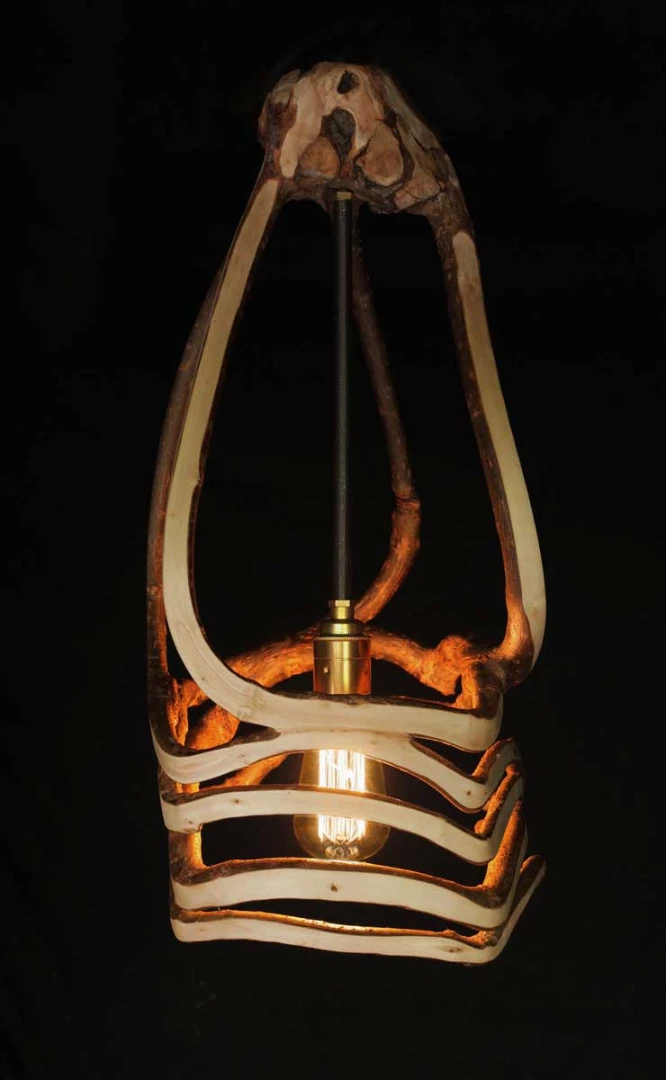Much of our furniture is made from timber. The wood to make that furniture has to be harvested from a felled tree which is then milled, sawed, planed, sanded, put back together with glue and screws, and finished. Wouldn't it be easier to avoid most of these steps and simply coax a tree to grow into a piece of furniture? That way, it would be one-piece, inherently strong, and could potentially last many years longer than assembled furniture. Gavin Munro thought this, too, and about a decade ago set about achieving this goal. He now creates furniture by cajoling trees to grow into one-piece items that are not only inherently practical, they are also eminently beautiful.
Munro is a man with a great deal of patience. Over a period of between four to eight years, he trains trees to grow over plastic formers to become chairs; carefully interlacing their branches to form a solid, intricate unit. Each tendril is slowly and deliberately coerced into creating entwined legs, stiles, rails, and stretchers that create a fully-formed piece of furniture.
Of course, to support his business (and probably help retain his sanity) in the intervening years between tree chairs, he is also creating quicker-growing mirror surrounds and lamp shades for sale before the chairs reach maturity. Though, when we say "quicker" these, too, take more time than the average person would call fast; the standard tree in Munro’s repertoire – the willow – still takes several years to grow big enough for a mirror surround.
To create this fascinating, one-off furniture, Munro has been slowly bending and shaping trees over plastic formers for nearly nine years now. Another year or so away from a large harvest of fully-formed furniture, Munro has still managed to produce the aforementioned mirror surrounds, some lamp shades and one or two prototype larger pieces to prove the concept.

But, with every 100 trees grown there are an attendant 1,000 branches that grow with them that must be shaped, coaxed, and cared for and, in turn, a further 10,000 shoots that must be pruned at precisely the right time to preserve the health of the tree while maintaining the desired shape. It is not work for the flighty or the impatient.
While training and pruning young tree branches to grow over formers, once the interwoven shape is achieved, Munro continually nurtures the trees as they mature and thicken. Then, when they have reached the desired size and thickness, they are harvested in winter and allowed to season for some months afterward until dry enough to plane the faces of the seats and arms to provide practical flat surfaces and to reveal the wood-grain inside.
Along with the willow (salix viminalis) that Munro and his company, "Full Grown", started with, he is now branching out into other species, including Ash, Sycamore,Hazel, Crab Apple, Sessile Oak and Red Oak. This inclusion of new timber types means that other products can be grown to take advantage of different grain, hardness, finish, and texture. A fully-grown, one-piece table is just one such item that may be fashioned from one or more of these new sorts of timber.

The idea of turning trees directly into furniture isn’t exactly new; apparently the Chinese put rocks in holes with trees so that the roots grew up around them to form stools, and one man in England has been promoting the art of growing stools in people’s garden for some time now. But Munro’s process of farming trees into furniture at an industrial scale – rather than at a dispersed or cottage-industry level – is a significant point of difference for Full Grown furniture.
Another point of difference is that, despite being produced on a largish scale, the tree furniture does not consume enormous amounts of energy as ordinary tree farming does. The trees are not sawed down, chopped up, carted away, and milled, for a start, which saves a lot of energy.
Further, the tending of the trees uses the least amount of water possible, the new plastic formers used to shape the trees are made from recycled plastic, and the office area (a caravan) has solar power and a composting toilet. This all means, from early calculations conducted by Munro and his team, that they barely use around 25 percent of the energy required to make a timber chair using ordinary methods.
Not quite yet available for sale, Munro is in discussions with a few galleries, with the first commercially-available chairs expected to be ready for sale by around the middle of 2017. Other pieces – such as the geometric lamps and mirror frames are expected to be made available sometime late in 2016. Each piece will be a unique heirloom for generations to come, and duly marked with a Certificate of Provenance.
Source:Full Grown





































